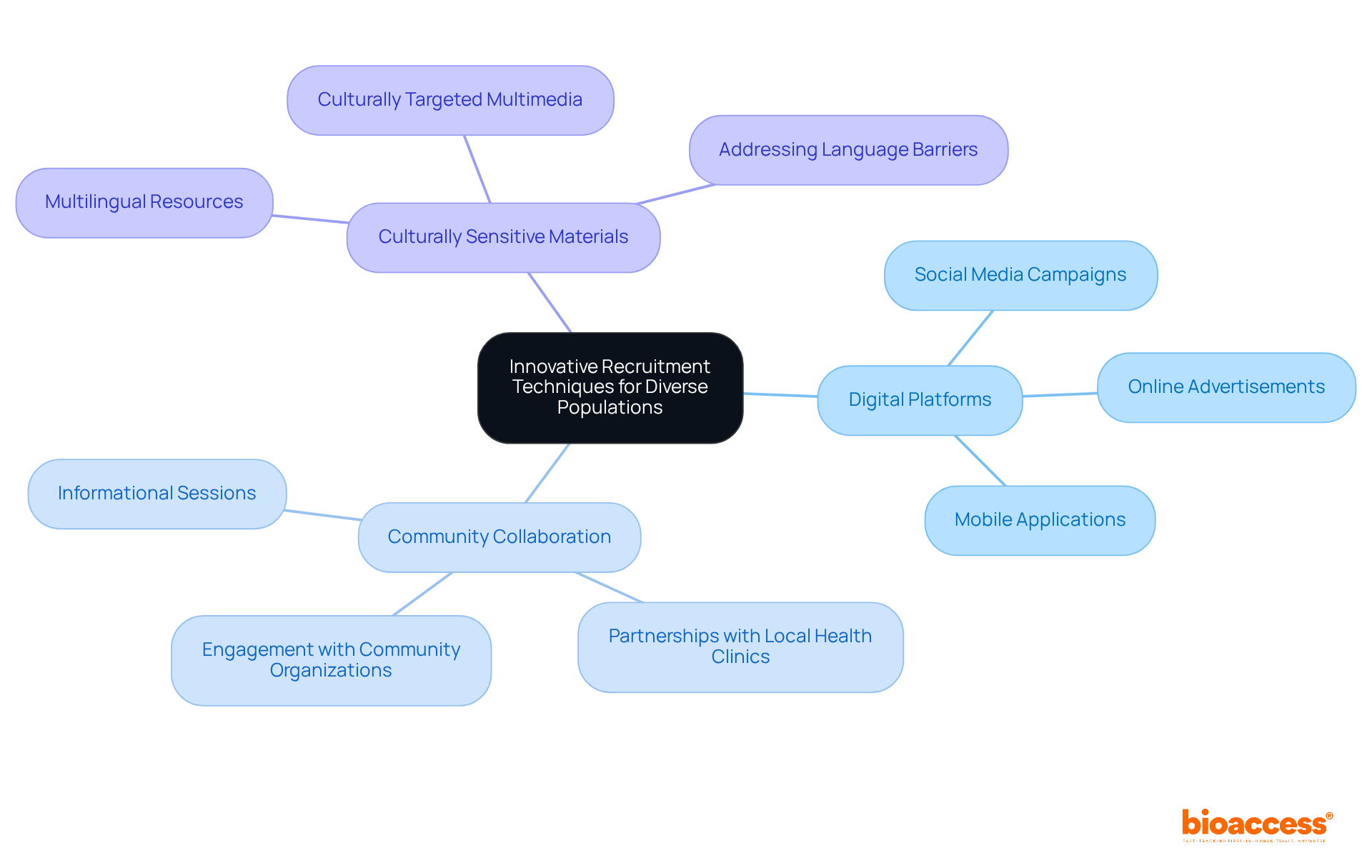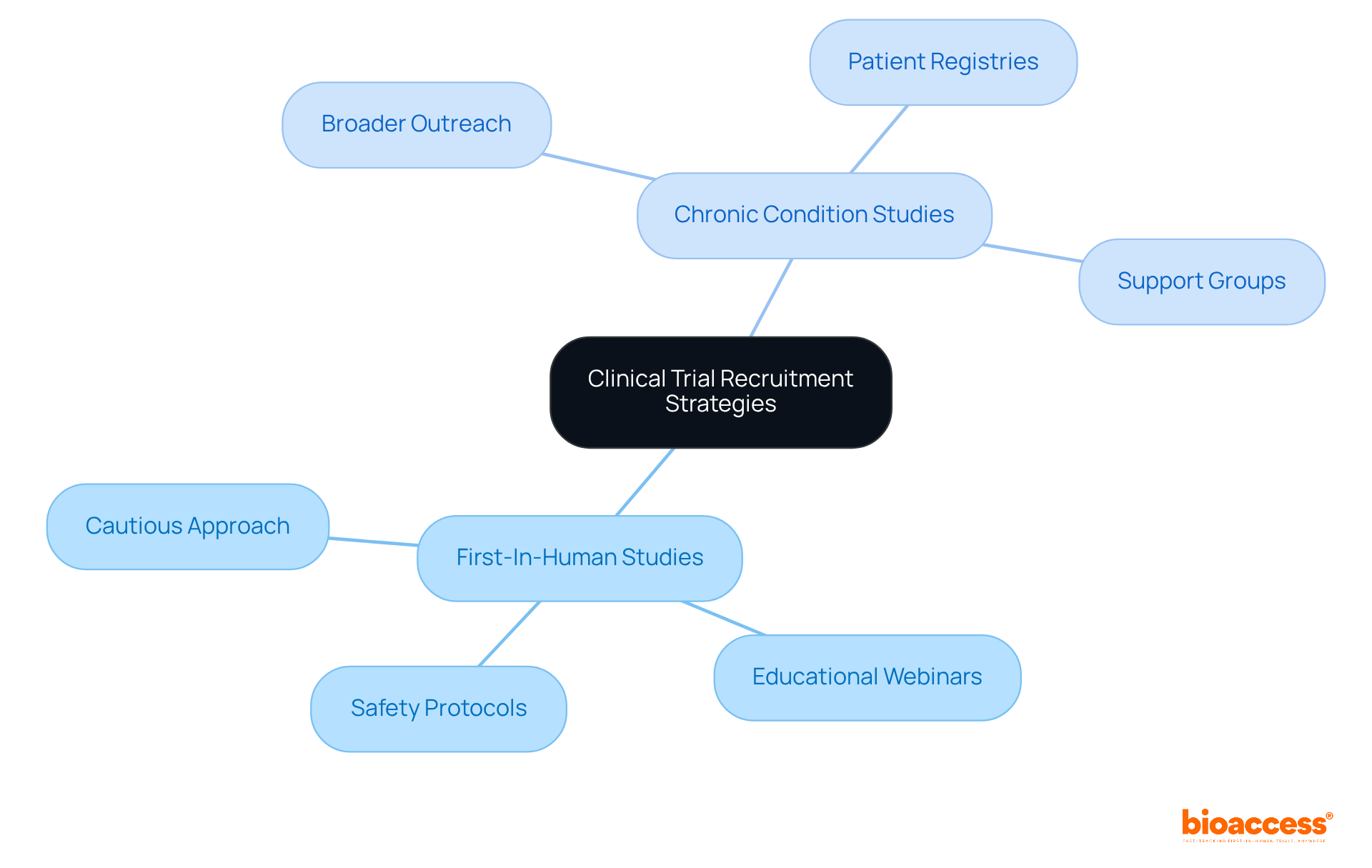


Effectively recruiting participants for clinical trials necessitates a strategic equilibrium between leveraging data analytics to identify potential candidates and cultivating trust through transparent communication. This article underscores that when researchers prioritize ethical communication regarding the risks and benefits of studies, and implement innovative recruitment strategies tailored to diverse populations, they can significantly boost participant engagement and enrollment success.
Achieving successful participant engagement in clinical trials hinges on a delicate balance between leveraging data and building trust. Researchers navigating the complexities of recruitment must identify potential participants through analytics while cultivating a transparent environment that addresses concerns and fosters confidence.
What innovative strategies can effectively engage diverse populations while ensuring ethical communication? This article delves into best practices for recruiting clinical trial participants, highlighting the significance of trust, innovative techniques, and tailored approaches to enhance enrollment and participation.
Achieving a balance between data and trust is paramount in recruiting clinical trials. Data analytics can effectively identify potential participants through demographics and health records; however, fostering trust is crucial for enhancing engagement. Researchers must prioritize transparency regarding data usage, adhering to regulations such as GDPR and HIPAA. Clear communication about the study's purpose, risks, and benefits significantly alleviates concerns among participants. Notably, trials that implement transparent communication strategies have witnessed up to a 30% increase in participant engagement, highlighting the potency of this approach.
Furthermore, establishing connections with healthcare providers is a vital strategy to bolster trust. Patients are more likely to consider participation when they receive recommendations from trusted sources. Thus, integrating data-driven insights with a strong emphasis on ethical communication is essential for recruiting clinical trials successfully. This dual approach not only cultivates trust but also enhances participant involvement, ultimately leading to more efficient clinical studies.

To effectively engage in recruiting clinical trials, employing innovative techniques to attract diverse populations is essential. Digital platforms, particularly social media, can significantly expand outreach efforts. Tailored social media campaigns that resonate with specific demographics engage potential participants in their preferred online spaces. Collaborating with community organizations fosters trust and encourages participation among underrepresented groups.
A significant example includes a case that collaborated with local health clinics to conduct informational sessions about the study. This initiative not only educated potential participants but also strengthened community ties. Additionally, utilizing culturally sensitive materials and multilingual resources addresses language barriers and cultural hesitations. Research shows that studies focused on recruiting clinical trials using these strategies experienced a 40% rise in enrollment from varied populations, emphasizing the success of creative recruitment methods.

Recruiting clinical trials requires that recruitment strategies be tailored specifically to the type of trial being conducted. In first-in-human (FIH) studies, a cautious approach is essential, focusing on individuals who are well-informed about the associated risks. This can be effectively achieved through educational webinars that outline safety protocols and emphasize the importance of attendee involvement in advancing medical research. Conversely, studies addressing chronic conditions can benefit from broader outreach efforts. Engaging with patient registries and support groups can facilitate connections with individuals who stand to gain from the intervention.
Moreover, aligning strategies for recruiting clinical trials with the trial's objectives and the characteristics of potential participants enables researchers to optimize enrollment and significantly enhance the overall success of their studies. By leveraging the expertise of specialized teams at bioaccess®, with over 20 years of experience in Medtech, recruitment efforts can be further improved, particularly in managing Early-Feasibility, First-In-Human, Pilot, Pivotal, and Post-Market Follow-Up Studies.

Achieving successful recruitment for clinical trials hinges on the delicate balance between data utilization and participant trust. By leveraging data analytics to identify potential participants while simultaneously prioritizing transparency and ethical communication, researchers can foster an environment conducive to engagement. This dual approach not only enhances participant involvement but also leads to more efficient and effective clinical studies.
The article highlights several key strategies for optimizing recruitment efforts:
Ultimately, the significance of these recruitment strategies cannot be overstated. As clinical trials continue to evolve, embracing a holistic approach that combines data-driven insights with genuine participant engagement will be crucial. Researchers are encouraged to implement these best practices to not only enhance their recruitment efforts but also contribute to the advancement of medical research that is inclusive and representative of the broader population.
Why is balancing data and trust important in recruitment for clinical trials?
Balancing data and trust is crucial because while data analytics help identify potential participants, fostering trust enhances engagement, leading to higher participation rates.
How can data analytics be used in recruiting participants for clinical trials?
Data analytics can identify potential participants through demographics and health records, helping researchers target the right individuals for their studies.
What role does transparency play in participant engagement?
Transparency regarding data usage and clear communication about the study's purpose, risks, and benefits significantly alleviates concerns among participants, leading to increased engagement.
What regulations must researchers adhere to when using participant data?
Researchers must adhere to regulations such as GDPR (General Data Protection Regulation) and HIPAA (Health Insurance Portability and Accountability Act) to ensure the ethical use of data.
How much can transparent communication strategies increase participant engagement?
Trials that implement transparent communication strategies have witnessed up to a 30% increase in participant engagement.
Why is establishing connections with healthcare providers important in recruitment?
Patients are more likely to consider participation in clinical trials when they receive recommendations from trusted healthcare providers, making these connections vital for building trust.
What is the overall strategy for successful recruitment in clinical trials?
The overall strategy involves integrating data-driven insights with a strong emphasis on ethical communication, which cultivates trust and enhances participant involvement, leading to more efficient clinical studies.